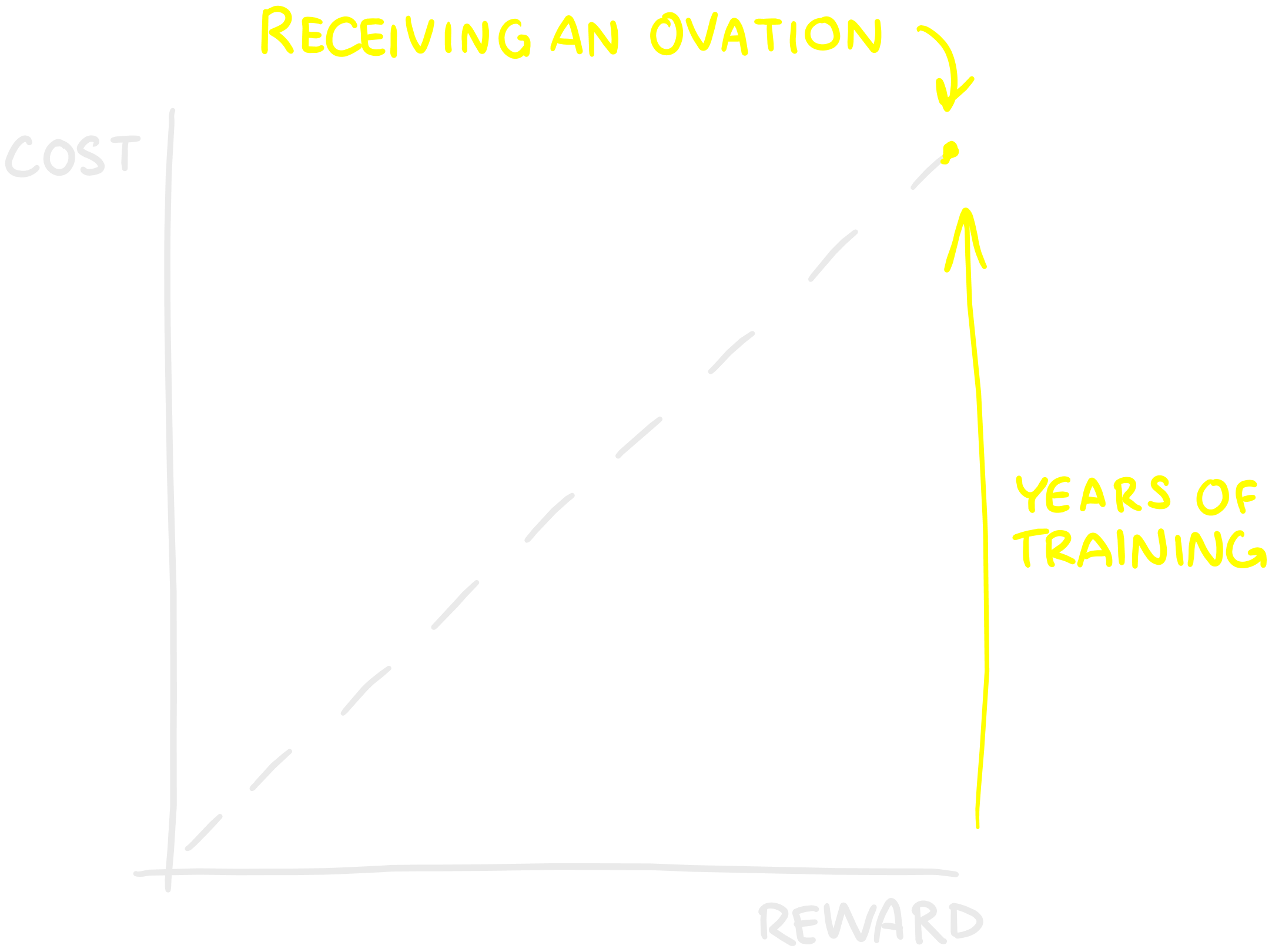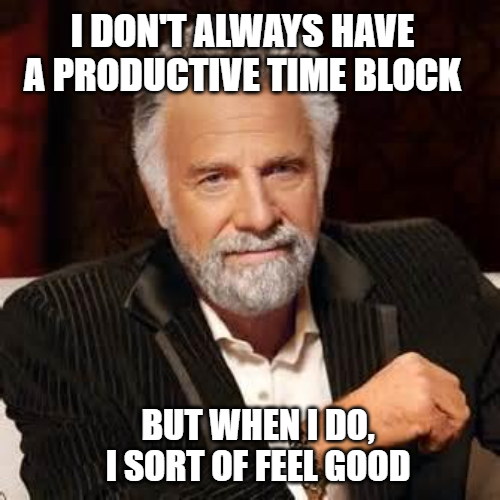Read this if you want to up your productivity and get consistent with good habits
The Ghost-House Technique can be effective in overcoming instances of resistance towards your work. However, it's super normal to want to diminish both the frequency and intensity of resistance over time. It's normal to want to reach a point where you genuinely and consistently just "feel like" engaging with your work—without needing a technique.
Full recovery from VIDS symptoms—now that you're blocking your vices—typically takes two or three weeks. Maybe more. While you need to be patient with this healing process, you don't have to just passively wait it out. You can actively strengthen your internal motivation during this time. You do this by linking your work to positive feelings.
James Clear talks about this in Atomic Habits. His fourth law, "Make it Satisfying," asserts that the key to forming good habits is to ensure your brain associates them with a reward. This makes you more likely to want to do it.
But, as Clear explains, there's a problem with this. With good habits, resulting rewards aren't guaranteed—and when they do happen, it's indirect, requires lots of repeated work, and occurs much later. This is unlike vices where the reward is obvious and immediate.
As Clear writes:
"In a perfect world, the reward for a good habit is the habit itself. In the real world, good habits tend to feel worthwhile only after they have provided you with something. Early on, it’s all sacrifice."
For instance, receiving a standing ovation at a piano recital—if you're talented enough to earn such an occasion—provides a supremely gratifying reward... but it comes at a price of thousands of hours of solitary and praiseless practice. This is known as delayed gratification.

So, Clear's solution to this dilemma is to proactively attach the immediate reward of some other action to the desired action. He refers to these as incentives.
For example, people didn't adopt the habit of brushing their teeth until toothpaste companies added a foaming agent and tasty peppermint flavoring. It was the immediate reward of a good taste and mouth feel—the incentive—that led to the general adoption of the teeth-brushing habit and the eventual benefits of improved oral hygiene.
Clear goes on to give other examples of "incentives" in action:
- To curb impulse buying, each time you resist the urge to spend, move the money you would have spent into a separate savings account for something big, like a trip.
- To establish an exercise habit, reward yourself with a massage after a successful workout.
_ab3cbc91-40a8-4880-8c47-15586847491b.png)
When I first read this, I agreed with the concept. But, on reflection, I found its practical application lacking. I was like…
Wait, am I supposed to book a $100 massage after each time I go for a 2-mile run?
And should I keep a bag of gummy bears at my desk to reward myself each time I complete a work task? Do I need to roll a playlist of hyper-stimulating MrBeast videos as I fold my laundry?
The problem is, as established by tons of life experience, "rewarding" myself doesn't work. It's either too cumbersome and involves extra steps that I'll do once or twice before abandoning it, like with Clear's impulse buying example... or it'll just reinforce the work's tedium, thereby exacerbating the resistance.
I don't know about you, but the idea of forever requiring a carrot on a stick to entice me to do what I know is best, just isn't appealing. I don't want to treat myself like a stubborn donkey. Not over the long-term, anyway.
Plus, it's never long before my brain decides to skip the middleman of the work and go straight for the sugary bait. If they're in my desk drawer, I'll just eat the gummies before I do my work (while watching MrBeast). Rewards just don't work.
But there's still a way out. I simply believe Clear got it wrong when he wrote:
"good habits tend to feel worthwhile only after they have provided you with something. Early on, it's all sacrifice."
Just because the act itself may require effort and discomfort, doesn't mean there can be no immediate satisfaction.
On the contrary. Doing something good for yourself, however small and inconsequential, does feel good. Maybe not the first time you do it. Maybe not every time. But there is the potential for immediate reward.
The problem is that we hardly pay attention to it.
You just need to train your brain to:
- take notice using mindfulness
- systematically associate the good feelings to the actions that preceded it;
- repeat this process a bunch of times.
With good habits, the gratification can be both immediate and delayed.
Using mindfulness to generate motivation
Imagine—and this may be hard for you—that you woke up early, started work or school feeling inspired and energized, and managed to make it through the entire day with solid concentration and productivity.
At the end of that day, how would you feel?
Good, right? Maybe amazing? You might even be inclined to let loose with a heel click or a little fist pump.

But what if you stopped for a moment? What if you zeroed in on the sensation, really took it in with your full awareness? What if you then did your best to mentally associate the feeling with the action—working hard—that preceded it?
Wouldn't that be exactly the sort of experience you'd need to happen, over and over and over, to increase your subconscious desire to do that sort of work? Wouldn't that lead to increased motivation?
Yes, of course, but there's a problem.
It takes a lot of fist pumps—and many heel clicks—to tangibly change your brain's wiring. Right now, working hard—burning a ton of precious calories for some distant and disconnected goal—isn't particularly enticing. It's not linked to tangible rewards, especially when compared to the instant gratification from vices.
Plus, having such a perfect day is extremely rare, if not nonexistent, for you. Even when you do manage to have a decently productive day, you'll still have wasted time here and there. So closing up your day never seems to feel all that great.
It's a Catch-22: you can't have a super productive day because you lack motivation... and you lack motivation because you haven't had enough productive days to cultivate motivation.
There is, however, a solution to this. And it lies in the breaks of the Pomodoro Technique.
The Art of "Pinning"
Forget, for a moment, being productive for an entire day. Imagine if you just worked successfully for a single, twenty-minute time block (or recall what just happened if you managed to get some work done with the Ghost-House Technique).
Maybe you won’t be inclined to do a heel click, but chances are, you’d feel good.

One of these won't do much, but imagine four, eight, or even sixteen of them every day. That's the kind of repetition that could start having an impact. That's what you'd need to make tangible changes to your brain's wiring—to build habits.
Now, I encourage anyone to employ the Pomodoro Technique to get their work or studying done. It's nothing fancy. It simply involves splitting your work session into timed work/break intervals. You'd use a timer to do a 25-minute work stretch, then take a 5-minute break, then another 25-minutes of work, then another 5-minute break and so on.
What's key though—what takes the Habit Reframe Method to the next level—is what you do during those repeated breaks.
So let's imagine you just engaged in your first 25-minute work-block of the day. The timer just chimed, and it's time for a five-minute break.
First, take a moment to stop and mindfully observe what's going on inside. Observe any thoughts, emotions, and feelings. See if it's possible to find a sprout of a good feeling for you to center your awareness on.
If you do manage to observe a good feeling, then give it your full attention. Really center your awareness on it.
Next, see if you can mentally associate or "pin" that feeling to the work you just did.
This is what I do: I stand up. I focus intently on the sensation. I then point to the screen while telling myself, "That right there. That work is the cause of this good sensation!"
From there, and if I'm at all feeling inclined, I let my body do the talking. Fist pumps are standard. So is raising the roof. How about a silly dance? Anything goes. There really is no best way to do this. Just let your body take the lead, always making sure to point back at the screen while telling yourself that the amazing feeling was a direct result of the work.

A minute or so later, the feeling might dissipate. That's okay. Use the remaining break time for some ergonomic activities. Look at something distant to give your eyes a rest. Walk around, shaking your arms and legs to get the blood flowing. Do some stretches: back bends, squats, lunges, shoulder and wrist movements.
If you still have some time after that, just use it to relax, perhaps plugging back into a present mindset for a mini, breath-focused meditation. When the Pomodoro timer chimes again, go through the motions of the Ghost-House Technique, observing what's going on inside, not being too surprised if you encounter some resistance.
Repeat this process over and over with each Pomodoro cycle. When you get to the final chime, when you're done for the morning or the day, make sure to pin the good feelings for that one work unit, plus the even greater satisfaction of completing a solid work session.
As is my mantra: never let a good feeling go to waste.
Pinning your way to better habits
This ‘Pinning’ practice isn't limited to work or study.
Start applying it after a morning run, meditation session, or cooking a healthy meal. After completing these activities, savor any positive feelings that emerge—satisfaction, well-being, or the simple relief of task completion.
Then, mentally link these emotions to the activity, reinforcing the direct association between these positive actions and positive outcomes. Augment this effect with fist pumps and other body movements.
With enough repetition, you'll see that the resistance towards your habits will be replaced by a subtle desire for them. More generally, with each act of pinning, you can turn self-improvement into what it needs to be: a sustainable journey of small victories, joy, satisfaction, and micro-boosts in self-worth, trust, and confidence.
And it's those sentiments that motivates you back towards healthy habits and actions. That's just Recursive Growth in action.

So once again, never let a good feeling go to waste.


